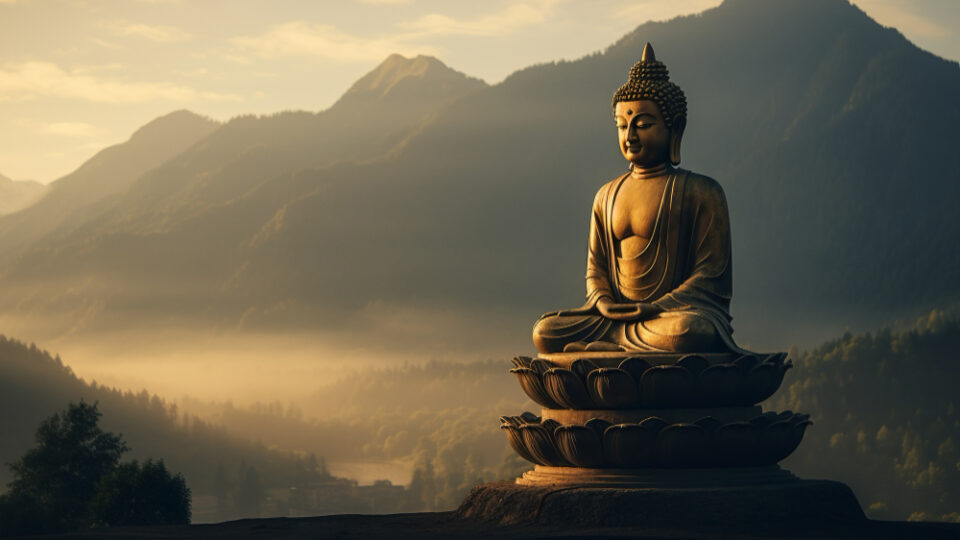In a world of instant gratification, Instagram reels, and incessant notifications, finding a moment of mental clarity feels like spotting a lotus in a polluted pond. Today is Buddha Poornima — a day to remember that the most popular Indian who walked the earth wasn’t an influencer but a man who sat under a tree, still and silent, and attained enlightenment. Buddha preached mindfulness — a practice that Ayurveda aligns with Sattva, the clarity of mind that fosters balance and peace.
Every day, I sit in my clinic, watching patients come in with the same ailment disguised in different names—stress, anxiety, burnout. Take Rakesh, for instance. A 34-year-old marketing executive, he walked in one evening with hair tousled, eyes bloodshot, and a nervous twitch dancing on his left eyelid. “Doc,” he said, “My mind is like a browser with 47 tabs open, and I can’t find the one playing the annoying music.”
Buddha would have smiled. “You are what you think,” he said centuries ago. The noise outside is nothing compared to the noise within. And while Rakesh’s tabs played chaotic tunes, I could see he hadn’t found the ‘pause’ button yet.
Ayurveda speaks of the three gunas — Sattva (clarity), Rajas (activity), and Tamas (inertia). Buddha taught the Middle Path, and Ayurveda prescribes balancing these gunas to achieve mental clarity. I asked Rakesh to sit down. “Ever heard of Brahmi?” I said. “Isn’t that a movie actor?” he quipped. I prescribed him Brahmi tea, the herb known for enhancing Sattva, calming the mind, and promoting clarity.
“Drink this,” I said. “And let’s talk about your tabs.”
Then there was Smita. A 29-year-old social media manager, she was drowning in digital overwhelm. “I can’t keep up with the algorithm, the trends, the endless scroll,” she said, her shoulders hunched under invisible expectations. “Every time I sit down to meditate, my brain is like a hyperactive monkey on caffeine.”
Buddha also had a term for that — ‘Chapala,’ the restless, flickering mind. Ayurveda calls it ‘Vata prakopa’ — the aggravated Vata dosha that spins the mind like a windmill in a storm. For Smita, I recommended an evening ritual: Brahmi oil application on the scalp and soles of the feet. One Ashwagandha tablet at night. “You want the monkey to calm down? Massage it out. Let the herb speak to your nerves.”
While she laughed at the analogy, she did it. A week later, Smita walked in, eyes brighter and shoulders lighter. “I slept like a baby,” she said, the monkey now a calm, meditative monk.
One of Buddha’s core teachings was ‘Anapanasati’ — the practice of observing the breath with mindful awareness. In Yoga, we practice ‘Pranayama’ — conscious breath control through specific techniques. I remember the first time I suggested it to my patient, Alex, a tech manager who spent more time in the virtual world than the real one. ‘Breathwork? Isn’t that for sadhus and saints?’ he asked, eyebrow raised.
“It’s for you,” I said. “And for anyone who wants to remember they’re alive.”
We started with a simple practice—‘Nadi Shodhana,’ alternate nostril breathing. Alex looked like a toddler learning to tie his shoelaces for the first few times—awkward, impatient, irritated. But on day four, he called me and said, “Doc, I don’t know what’s happening, but the fog in my head is clearing.”
Buddha Poornima is the perfect day to practice a ‘Mindful Detox.’ It doesn’t require a mountain, a monastery, or a miracle. It needs you, your breath, and a willingness to pause.
I often recommend a simple 7-day routine that weaves Buddha’s teachings with Ayurvedic practices to cultivate mental clarity. Each morning, start by sitting quietly for five minutes, practising Anapanasati — observing the natural rhythm of your breath as it flows in and out. By midday, prepare a calming cup of Brahmi tea, close your eyes, and let its soothing warmth infuse your mind with Sattva — the essence of clarity and calm. In the evening, gently massage Brahmi oil into your scalp and feet, using slow, circular motions to melt away the day’s stress and ground your senses. Before bedtime, unwind with a brief self-massage using warm sesame oil, focusing on the temples and soles of the feet. As you do, imagine the serene image of Buddha beneath the Bodhi tree — not chasing thoughts, just being.
One of my elderly patients, Sarita Aunty, has been practising this for a month. She walked in last week and said, “Doc, I’m 65 and my mind finally feels like a pond without ripples.”
Research backs these practices. Brahmi has been shown to reduce anxiety and improve cognitive function. Breathing techniques like ‘Nadi Shodhana’ activate the parasympathetic nervous system, lowering cortisol levels. Buddha knew this centuries ago, even without the clinical trials.
Today, as I sit in my clinic on Buddha Poornima, I am reminded of his teachings. The mind is a river, Buddha said. Watch it flow. Let the thoughts pass like clouds. Be a witness, not a warrior.
In this fast-paced world, maybe that’s the biggest lesson we need. Not another app, another notification, or another tab open. Just a moment to sit under our own Bodhi tree, breathing, being, and remembering the silence we lost in the noise.


2 comments
🙏
thank you